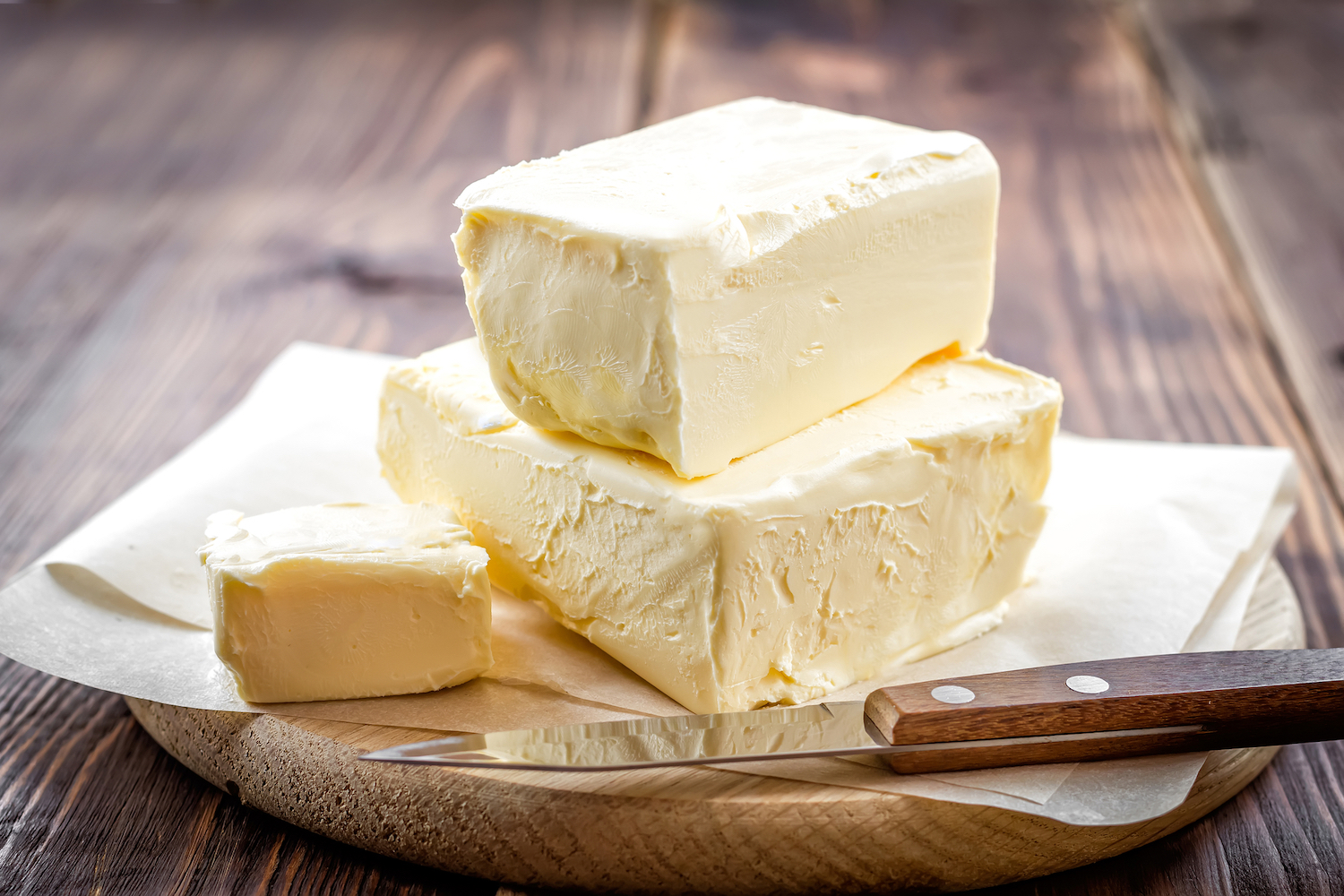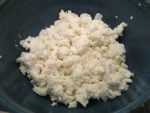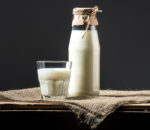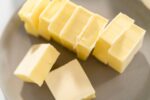
How to Make Butter
When I was growing up, our family only used margarine and I continued to use it throughout adulthood until last year. Now I only buy butter (from grass-fed cows).
To make butter, you have to churn (shake up) cream or whole milk. In the past, people used milk churns to separate out the butter. Today you can make butter with electric mixers or food processors.
I’ve never made my own butter, but I recently found where I can buy raw milk. You can also make butter from pasteurized milk (see link at bottom of page).
INFORMATION BELOW FROM 1800s COOKBOOKS
Butter is indispensable in almost all culinary preparations. Good fresh butter, used in moderation, is easily digested. It is softening, nutritious and fattening, and is far more easily digested than any other of the oleaginous substances sometimes used in its place.
TO MAKE BUTTER
When you skim cream into your cream jar, stir it well into what is already there, so that it may all sour alike. No fresh cream should be put with it within twelve hours before churning or the butter will not come quickly, and perhaps, not at all.
The churn, dasher, tray and ladle should be well scalded before using, so that the butter will not stick to them, and then cooled with very cold water. Now pour in the thick cream. Churn fast at first, then as the butter forms, more slowly, always with perfect regularity. In warm weather, pour a little cold water into the churn should the butter form slowly. In the winter if the cream is too cold, add a little warm water to bring it to the proper temperature. When the butter has “come,” rinse the sides of the churn down with cold water and take the butter up with a perforated dasher or a wooden ladle, turning it dexterously just below the surface of the buttermilk to catch every stray bit. Have ready some very cold water in a deep wooden tray and into this plunge the dasher when you draw it from the churn. The butter will float off, leaving the dasher free.
When you have collected all the butter, gather behind a wooden butter ladle and drain off the water, squeezing and pressing the butter with the ladle. Then pour on more cold water and work the butter with the ladle to get the milk out. Drain off the water, sprinkle salt over the butter—a tablespoonful to a pound. Work it in a little and set in a cool place for an hour to harden. Then work and knead it until not another drop of water exudes and the butter is perfectly smooth and close in texture and polish. Then with the ladle make up into rolls, little balls, stamped pats, etc.
TO MAKE BUTTER QUICKLY
Immediately after the cow is milked, strain the milk into clean pans and set it over a moderate fire until it is scalding hot. Do not let it boil. Then set it aside and when it is cold, skim off the cream. The milk will still be fit for any ordinary use. When you have enough cream, put it into a clean earthen basin. Beat it with a wooden spoon until the butter is made, which will not be long. Then take it from the milk and work it with a little cold water until it is free from milk. Then drain off the water, put a small tablespoonful of fine salt to each pound of butter and work it in. A small teaspoonful of fine white sugar, worked in with the salt, will be found an improvement—sugar is a great preservative. Make the butter in a roll and cover it with a bit of muslin and keep it in a cool place.
TO MAKE SALT BUTTER FRESH
When butter has too much salt in it, put to each pound of it a quart of fresh milk, and churn it an hour; then treat it like fresh butter, working in the usual quantity of salt. A little white sugar worked in, improves it. This is said to be equal to fresh butter. Salt may be taken out of a small quantity of fresh butter, by working it over, in clear fresh water, changing the water a number of times.
TO EXTRACT RANCIDITY FROM BUTTER
Take a small quantity, that is wanted for immediate use. For a pound of the butter, dissolve a couple of teaspoon of saleratus in a quart of boiling water, put in the butter, mix it well with the saleratus water, and let it remain till cold, then take it off carefully, and work a tea- spoonful of salt into it. Butter treated in this manner answers very well to use in cooking.
A BRINE TO PRESERVE BUTTER
First work your butter into small rolls, wrapping each one carefully in a clean muslin cloth, tying them up with a string. Make a brine, say three gallons, having it strong enough of salt to bear up [float] an egg. Add half a teacupful of pure, white sugar, and one tablespoonful of saltpeter. Boil the brine and when cold, strain it carefully. Pour it over the rolls so as to more than cover them, as this excludes the air. Place a weight over all to keep the rolls under the surface.
Image from Deposit Photos
=================================================
MORE READING
How to Make Homemade Butter (modern method)
Making Your Own Butter from Pasteurized Milk
=================================================
Do You Use Butter or a Substitute? Please Leave a Comment Below.
=================================================



6 thoughts on “How to Make Butter”
I have an old crock churn and a dasher. The churn is about 30 inches tall and round.
I would like to make butter useing whole unpasteurized unhomoginized milk that my farmer friend gives to me.
I would like to churn the milk and have buttermilk left in the churn when I am finished.
I did the churning when I was a child but do not remember what the process was before I was told to start churning. Can you provide the process.
I do not want to use a jar or a blender. I want to use the churn and dasher. Thank you so much. Can you send to my email as I do not know that I can find this page again?
This is a good article on the Countryfarm Lifestyles website. Scroll about a third of the way down the page to “How to Make Butter the Traditional Way with a Churn and Dasher.”
http://www.countryfarm-lifestyles.com/how-to-make-butter.html#.WnJRLmaZPSZ
I’m also sending this link to your personal email as requested.
I was whipping the cream at a family gathering when I was a kid (very long time ago!) and my grandmother told me to stop or we’d have butter instead of whipped cream. I am happy today to just buy Kerrygold butter and not do all this work. Oleaginous—what a great word but unappetizing word.
I read 19th century newspapers and butter, the price of butter, and butter factories were regularly mentioned in the papers. There were also articles about the vile oleomargarine and all its adulterations. Yep, I’ll stick to Kerrygold. 🙂
Very interesting post, as usual. Thank you!
Butter is making a comeback now that we’re finding out margarine isn’t so great after all.
I love this! A lot of people do not know the process. thanks for this information.
I have so much fun looking through old cookbooks. I wouldn’t want to live in the old days, but I sure like to read about it. And sometimes I decide to try some of the recipes.